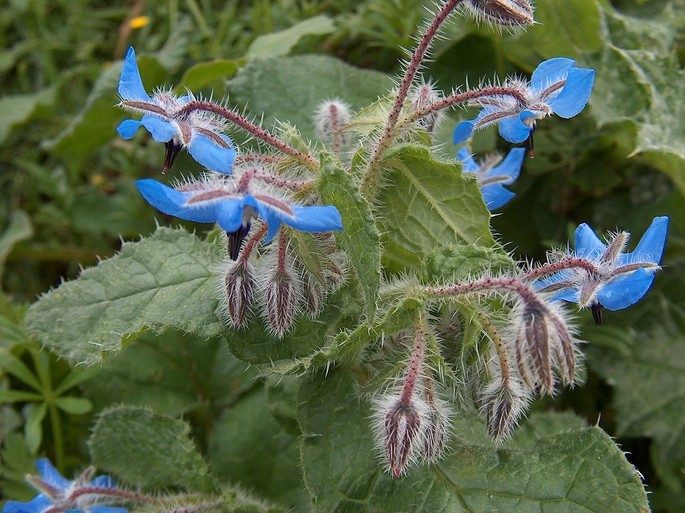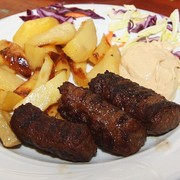As soon as the first spring warmths arrive, the meadows are filled with this wonderful star-shaped flowers with a bright blue color: we are talking about Borragine, whose real name is Borago Officinalis. Since ancient times, it was used to ward off melancholy and to lower fever, but it was also used to flavor wine: the Romans with the purpose of instilling joy, while the Celts to encourage warriors.
What the flower looks like: The plant is covered with a rough nap, and can grow up to 70 cm in height. The stem is erect with oval, rough and rather wrinkled leaves. The beautiful star-shaped flowers are placed in scattered clusters: they have five petals that at first are similar in color to purple, but then they turn blue.
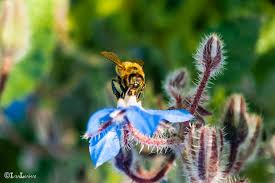
[Credit Flickr]
What part do you have to collect? Almost everything is used in Borage: the leaves, flowers and seeds, from which oil is obtained. The leaves, and to a lesser extent the flowers, are usually used fresh. The leaves must be harvested when the plant is going to flower: separate them individually and avoid those that are spotted and eaten by insects. To collect the Borage, I suggest you choose a nice day, when the sun has dried the dew. As for the dried plant, you don't have to keep it for more than a year, as it quickly loses its medicinal effect.
And in the garden? Borage is very useful, both in the garden and in the vegetable garden: it attracts honey bees, and stimulates the growth of strawberries when it is planted near them. Furthermore, if you plant it next to the tomatoes, you will keep away the harmful insects, such as the caterpillars. Borage prefers limestone soils rich in nutrients.
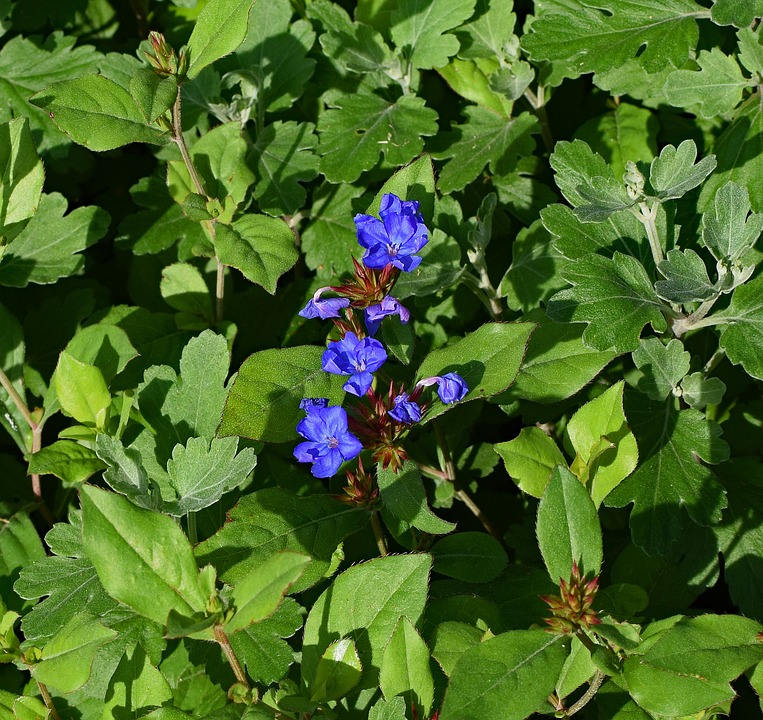
[Credit Pixabay]
Versatility in the kitchen: The Borage flowers have a fragrance similar to that of the cucumber and when they are immersed in water, combined with the lemon, they become a tasty and refreshing drink: the flowers are then very good when they are candied and used to decorate cakes or simply to be eaten like candy! It is very easy to find them in salads to enhance and brighten the mind, but you can also fry them in batter or cook them in risotto. Borage syrup also exists: made with the precious blue flowers, this sweetness strengthens the heart and calms the nerves. And so as not to miss anything ... the flowers are also used for vinegar coloring. However, in the kitchen the young leaves are mainly used, which are always cooked to remove the hairs that cover them: they can be put in soups, in omelettes, or in ravioli fillings. The leaves instead, in the past, were put into wine to cheer up men and to dispel sadness and melancholy in women. In short, we are talking about a truly versatile plant!
Why is it called Borage? The name derives from the Latin borra (rough wool fabric), due to the hair that covers the leaves. Others derive it from the Arabic abu araq (father of sweat), through the medieval Latin borrago, perhaps due to the plant's sweat properties. Some authorities believe instead that the Latin name Borago, from which our popular name is taken, is a corruption of corago, from "cor" or heart, and "needle", or "bearer": bearer of courage, for the sensation of friendliness that this flower offers.
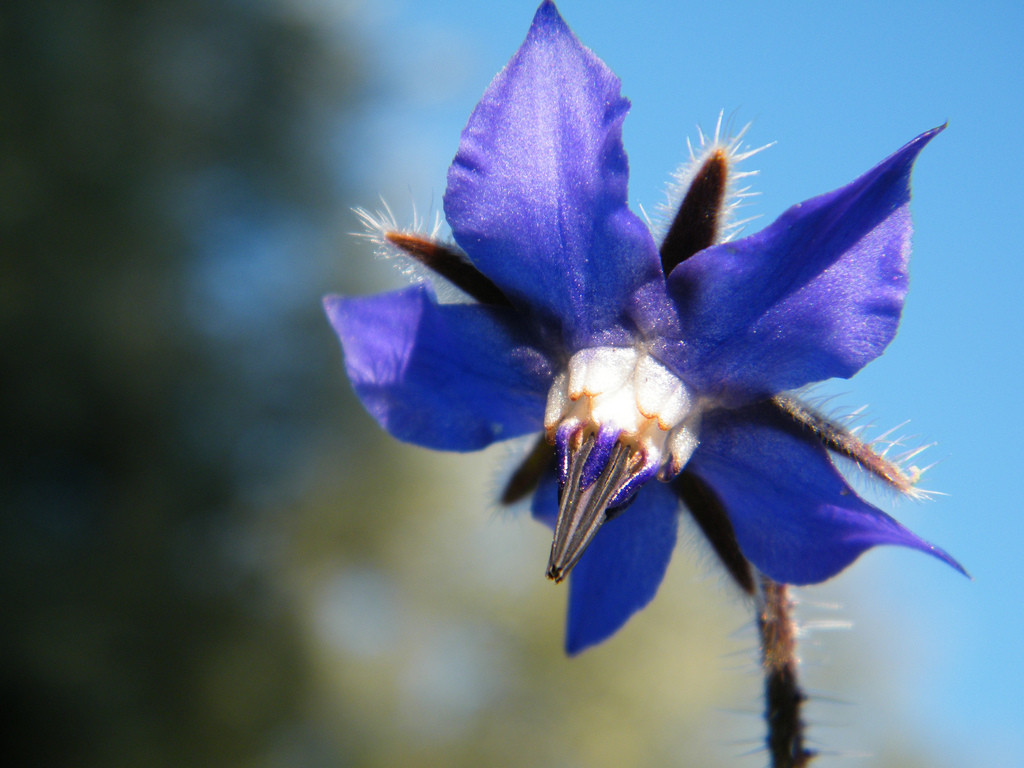
[Credit Flickr]
The numerous properties: Diuretic and emollient, Borage is widely used for fever and respiratory disorders. Thanks to its saline constituents, it promotes kidney activity and for this reason is used to expel febrile catarrhes. Its emollient qualities are due to the mucilage contained in the entire plant. Borage contains potassium and calcium, combined with mineral acids. Due to the presence of potassium chloride nitrate, when the plant is burned, it emits small sparks with a slight explosive sound. One of the most important nutrients, are the essential fatty acids, which our body needs to keep fit. In this case, we find the renowned "oil" of Borragine, which is highly sought after for the positive effects it has on the heart, on the arteries and for its ability to reduce the accumulation of cholesterol in the blood. This oil is derived from seeds, and is rich in polyunsaturated, omega-3 and omega-6 fatty acids. Natural sedative Borage is well known for its calming qualities and has been used to treat various states of nervousness. Its natural sedative effects are valid to relieve depression and to regulate the female hormone balance, often associated with menopause and menstrual cycles.
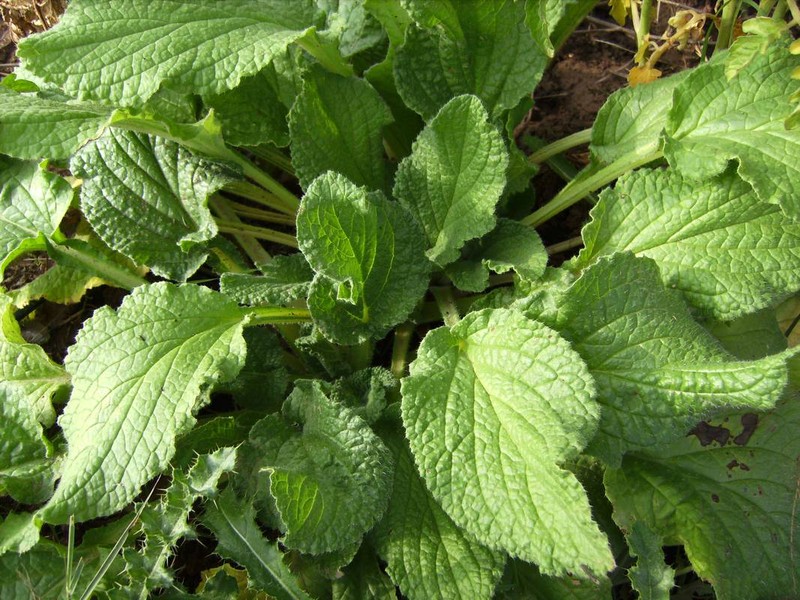
How and for what to use the Borage plant:
Decoction of flowers: boil for about 10 minutes, over low heat, a liter of water with 30 grams of dried flowers. Then remove from heat, let cool and then filter with a sieve. The decoction is very useful in case of kidney and bladder, inflammation because it acts as a diuretic and purifier; 2-4 cups a day are enough to feel better.
Infusion with leaves: boil a liter of water, then remove it from the heat and add about 20 grams of fresh leaves. Leave to infuse for about half an hour and then pour the contents into a cup, using a sieve to filter. The infusion is ideal for problems with the respiratory tract, cough and bronchitis: you can drink a cup of infusion, sweetened with a little honey, 3 times a day. If, on the other hand, you are tired, strained or tense, take two cups of infusion during the day.
Cataplasm: cook about 40 grams of dried leaves and about 40 grams of dried flowers in very little water. When the water evaporates, spread the leaves and flowers on a gauze, crush them vigorously until the juice comes out, and finally apply the hot poultice on the affected area. Cataplasm is indicated for reddened skin, furunculosis and eczema in general.
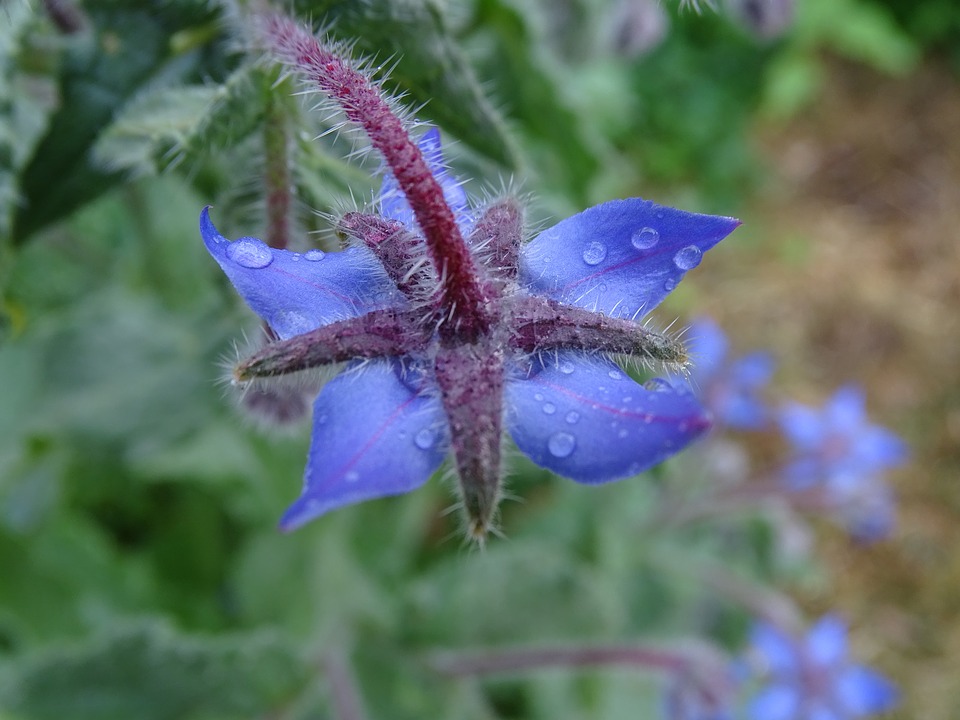
[Credit Pixabay]
Some warning on the use of Borage: It is important not to overdo the consumption raw of this plant, as the leaves contain small amounts of alkaloides harmful to the liver. Therefore it is better not to consume it if you have liver problems. If Borage is used frequently, it is good to consume it cooked: cooking reduces the action of alkaloides. Herbal teas and infusions are also contraindicated during pregnancy and lactation.
So let yourself be hypnotized by this flower with a blue color and star shape, you will certainly like to take home to use in many different ways. Good crop!

